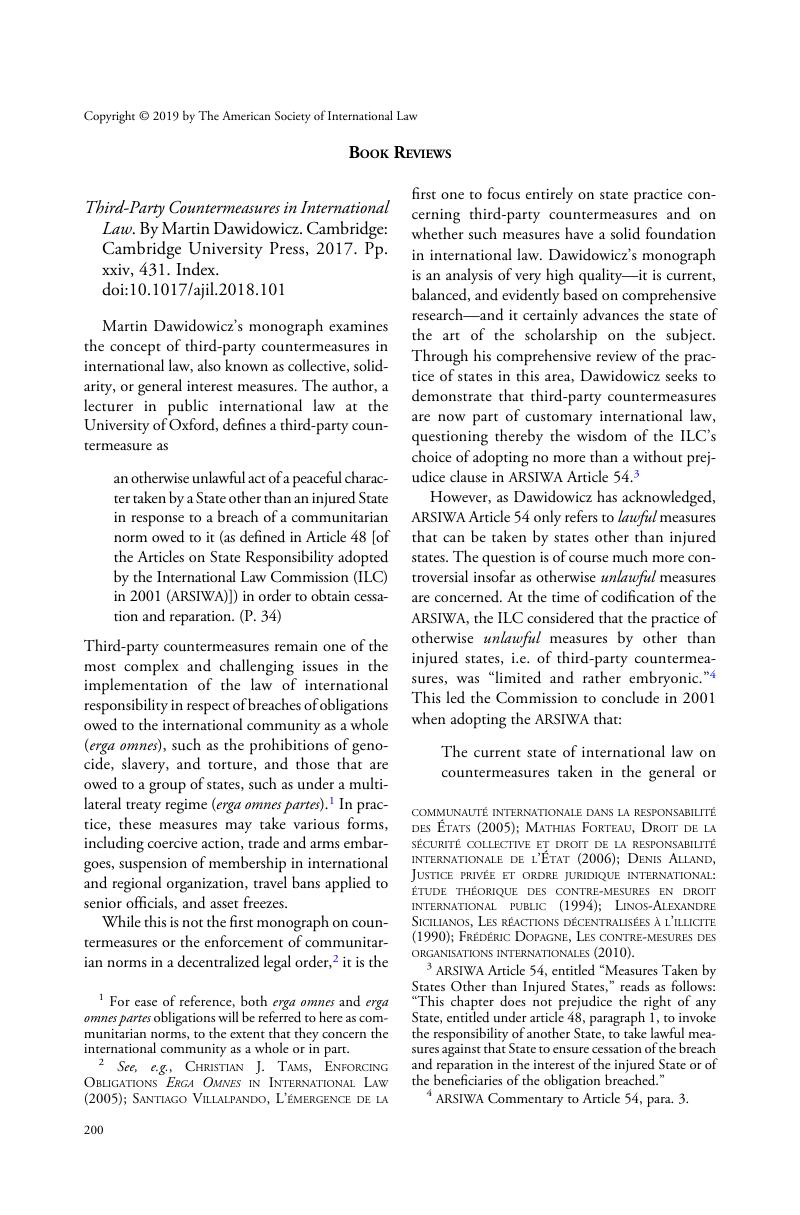Published online by Cambridge University Press: 14 January 2019

1 For ease of reference, both erga omnes and erga omnes partes obligations will be referred to here as communitarian norms, to the extent that they concern the international community as a whole or in part.
2 See, e.g., Christian J. Tams, Enforcing Obligations Erga Omnes in International Law (2005); Santiago Villalpando, L’émergence de la communauté internationale dans la responsabilité des États (2005); Mathias Forteau, Droit de la sécurité collective et droit de la responsabilité internationale de l'État (2006); Denis Alland, Justice privée et ordre juridique international: étude théorique des contre-mesures en droit international public (1994); Linos-Alexandre Sicilianos, Les réactions décentralisées à l'illicite (1990); Frédéric Dopagne, Les contre-mesures des organisations internationales (2010).
3 ARSIWA Article 54, entitled “Measures Taken by States Other than Injured States,” reads as follows: “This chapter does not prejudice the right of any State, entitled under article 48, paragraph 1, to invoke the responsibility of another State, to take lawful measures against that State to ensure cessation of the breach and reparation in the interest of the injured State or of the beneficiaries of the obligation breached.”
4 ARSIWA Commentary to Article 54, para. 3.
5 ARSIWA Commentary to Article 54, para. 6.
6 Roberto Ago, Second Report on State Responsibility, UN Doc. A/CN.4/233, reproduced in ILC Yearbook, Vol. II, at 185, para. 25 (1970).
7 Sicilianos, Linos-Alexandre, Countermeasures in Response to Grave Violations of Obligations Owed to the International Community, in The Law of International Responsibility, at 1142 (Crawford, James, Pellet, Alain & Olleson, Simon eds., 2010)Google Scholar.
8 Paddeu, Federica, Third-Party Countermeasures in International Law, 77 Cambridge L.J. 427, 428 (2018)Google Scholar (book review).
9 See, e.g., id.; Picone, Paolo, Third-Party Countermeasures in International Law, 4 Rivista di diritto internazionale 1371 (2017)Google Scholar (book review).